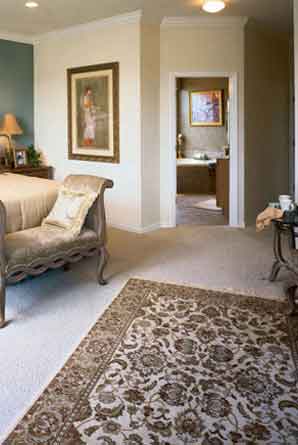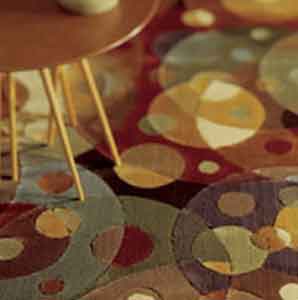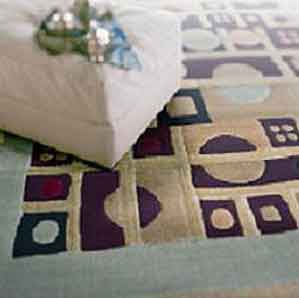Area Rugs - Before You Buy
- Area rugs are made in different sizes and shapes; round, octagon, square, oval rectangle or runners. The most common sizes are:
- 2’x3’
- 4’x6’
- 5’x8’
- 6’x9’
- 8’x10’
- Most handmade rugs are rectangular and have standard sizes.
- As a general rule, choosing the correct size area rug depends on the dimensions of the room or space you are trying to cover.
How to Select the Ideal Area Rug
Size and Shape- Measure the size of your room.
- Measure the space you want covered
- Place a piece of paper where each of the corners will fall. Adjust the corners as needed to make the space larger or smaller and then re-measure the area.
- To cover the majority of the room, be sure to leave a 12”-15” border of flooring exposed to set off your area rug.
- When placing an area rug under your dining room table, select a rug that is large enough so that when seated at the table the back legs of the chairs are on the rug with enough space to push back and get up from the table
- Color is one of the most vital elements of an area rug.
- Select a rug with colors that will visually enhance your room’s décor.
- The colors don’t have to match the other colors in the room perfectly.
- Colors are also an important factor in determining the origin of many handmade rugs.
- Pattern is one of the most helpful elements in narrowing down rug selection, especially after size and color.
- We define pattern as the way lines are used to form shapes on a rug.
- Style can be defined as the way different motifs, colors and patterns give character to a rug.
- Styles range from floral to contemporary to traditional. They can also reflect a theme or season.
- The most important styles of handmade rugs that have existed or still exist in various parts of the world include: Persian, Chinese, Turkoman, Caucasian, European, Anatolian, Tibetan, Indian, Baluchi, North African, Native American, and East Turkestan.
- All rug can be divided into 3 major designs:
- All over, in which motifs are spread throughout the rug.
- Medallion, where a large centerpiece is the focal point of the design.
- One-sided, in which the design is woven in one direction.
Age and Antique Rugs:
- The age attribute specifies how old the rug is.
- There are three major timeline categories:
- Antique – over 60 years old.
- Semi-antique; between 25 and 60 years old.
- Contemporary, less than 25 years old.
Handmade rugs are classified according to these conditions:
- Fine, a rug in excellent shape with no stains, tears or holes, and no previous repair work.
- Average, a rug that may have undergone or may require some minor repair.
- Worn, a rug which may have discoloration, fading, insect or foundation damage.
- Worn rugs should not be dismissed because similar to fine and average rugs they can still have a very good resale value.
Additional Items to Consider
- Product delivery and installation materials (rug padding), there could be an additional charge.
- Financing – Many retailers offer financing. This is not an additional cost, but rather an option for payment.
- It is important to have the retailer provide the manufacturer’s warranty and care guide for directions on how frequently to the rug should be cleaned and potential cost to clean it.



